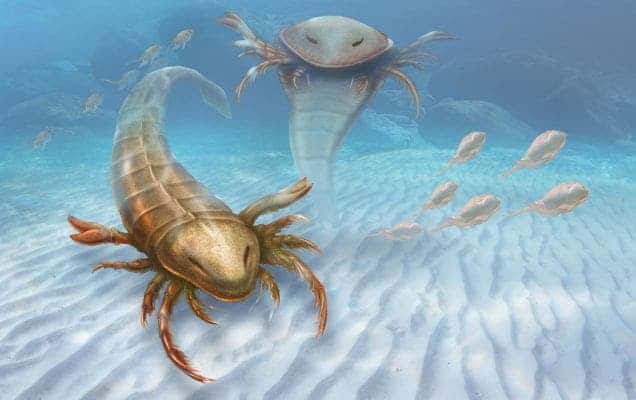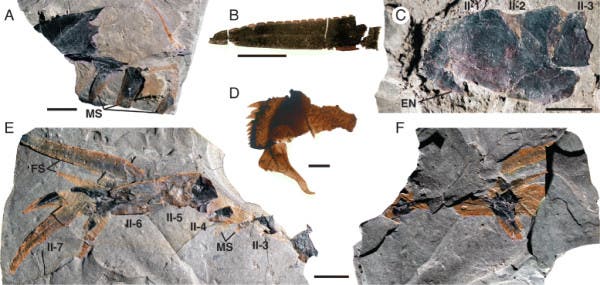This bizarre creature looks like a cross between a scorpion and a boat, which is pretty accurate considering it was actually as big as a boat. Pentecopterus decorahensis, named after the ancient Greek warship, likely dominated the Ordovician ocean waters some 460 to 248 million years ago, paleontologists say. Sporting a thick head shield, a paddle for a tail, large grasping limbs and 1.7 meters in length (5.5 feet), this sea beast was a force to be reckoned with.

“Pentecopterus was an incredibly bizarre animal, with a long head that looked somewhat like the prow of a ship, a narrow body and massively enlarged limbs that it used to capture prey,” says Yale paleontologist James Lamsdell. “It would have been the largest predator in its environment and would have grabbed prey with its large, spiny legs and then pulled it towards its mouth.”
Lamsdell and colleagues found unexpectedly well preserved fragments of Pentecopterus trapped inside a thick sandy shale layer found in Iowa. Analysis quickly revealed the researchers were on to something big. First of all, the dating suggests Pentecopterus is at least 460 million years old, which makes it the earliest discovered eurypterid by a margin of 10 million years.
Eurypterids are commonly called “sea scorpion” for rather obvious reasons. This has led some scientists in the 1920s to claim that these animals are scorpions. A later train of thought put this conjecture on its head and claimed that scorpions were in fact eurypterids. More recently, some think eurypterids and scorpions are distinct lineages who shared a common ancestor. The present consensus is that neither of these conclusions hold. Instead, it’s most likely eurypterids are more basal chelicerates than scorpions. Those eurypterids that resemble scorpions are actually a minority.

All eurypterids were predators, and very large for those times on top. They were pretty high up on the food chain, eating animals such as trilobites and even the contemporaneous placoderms. In fact, they were so successful that they overly predated their ecosystem and started eating each other. This is based on coprolites findings (fossilized feces) of Eurypterids which contained the body parts of other Eurypterids. We don’t know that much about Pentecopterus, though.

For what it’s worth, the fossils were found preserved in pristine condition. Lamsdell and colleagues found even scales, follicles and stiff bristles that once covered the animals. So well preserved that, in fact, the researchers could peeled the fossils off the rock and studied them under a microscope. Remember, we’re talking about an apex predator that lived 460 million years ago. Never ceases to boggle the mind.






